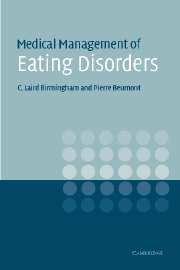Book contents
- Frontmatter
- Contents
- List of color plates
- List of contributors
- List of abbreviations
- Introduction
- PART I THE MEDICAL PERSPECTIVE
- PART II TREATMENT
- PART III SPECIAL ISSUES
- PART IV THE PSYCHIATRIC AND PSYCHOLOGICAL PERSPECTIVE
- 10 Physical disease and mental illness: pathology and psychopathology
- 11 Psychopathology and the mental status examination
- 12 Psychopathology and phenomenology
- 13 Specific psychological therapies
- PART V AREAS OF SPECIAL INTEREST
- Bibliography
- Index
- Plate section
11 - Psychopathology and the mental status examination
Published online by Cambridge University Press: 18 December 2009
- Frontmatter
- Contents
- List of color plates
- List of contributors
- List of abbreviations
- Introduction
- PART I THE MEDICAL PERSPECTIVE
- PART II TREATMENT
- PART III SPECIAL ISSUES
- PART IV THE PSYCHIATRIC AND PSYCHOLOGICAL PERSPECTIVE
- 10 Physical disease and mental illness: pathology and psychopathology
- 11 Psychopathology and the mental status examination
- 12 Psychopathology and phenomenology
- 13 Specific psychological therapies
- PART V AREAS OF SPECIAL INTEREST
- Bibliography
- Index
- Plate section
Summary
A major difference between psychiatry and the other disciplines of clinical medicine is the complete dependence of the former on the mental state examination. Although the physical examination of the patient is always important in medicine, the mental status examination is absolutely fundamental to the concepts of psychiatry and to its clinical practice.
Psychiatry is concerned with mental illnesses. Some of these are based on underlying organic pathology, usually of the brain. The dementia that arises from thiamine (vitamin B1) deficiency is AN example. In others, AN underlying pathology is suspected but not yet proven, e.g. schizophrenia. For yet other psychiatric illnesses, it is generally accepted that no pathology exits and that the illness has arisen entirely from constitutional or experiential factors. Post-traumatic stress disorder and BN are examples. Because of the heterogeneity of psychiatric illnesses, the wide variation in their causation, and the inconsistency of their association with physical pathology, it is necessary to add another criterion to the description of any mental illness, i.e. the construct of psychopathology. Without the presence of a psychopathology, the distinction between mental illnesses and other presentations of statistical abnormality are entirely arbitrary. Thus, a person who uses laxatives on the instruction of their physician for a disorder of the bowels is quite different from a person who uses laxatives based on imaginary fears of becoming obese. It is not the use of laxatives that defines AN illness; it is the mental processes that have led to its occurrence.
- Type
- Chapter
- Information
- Medical Management of Eating DisordersA Practical Handbook for Healthcare Professionals, pp. 211 - 214Publisher: Cambridge University PressPrint publication year: 2004



